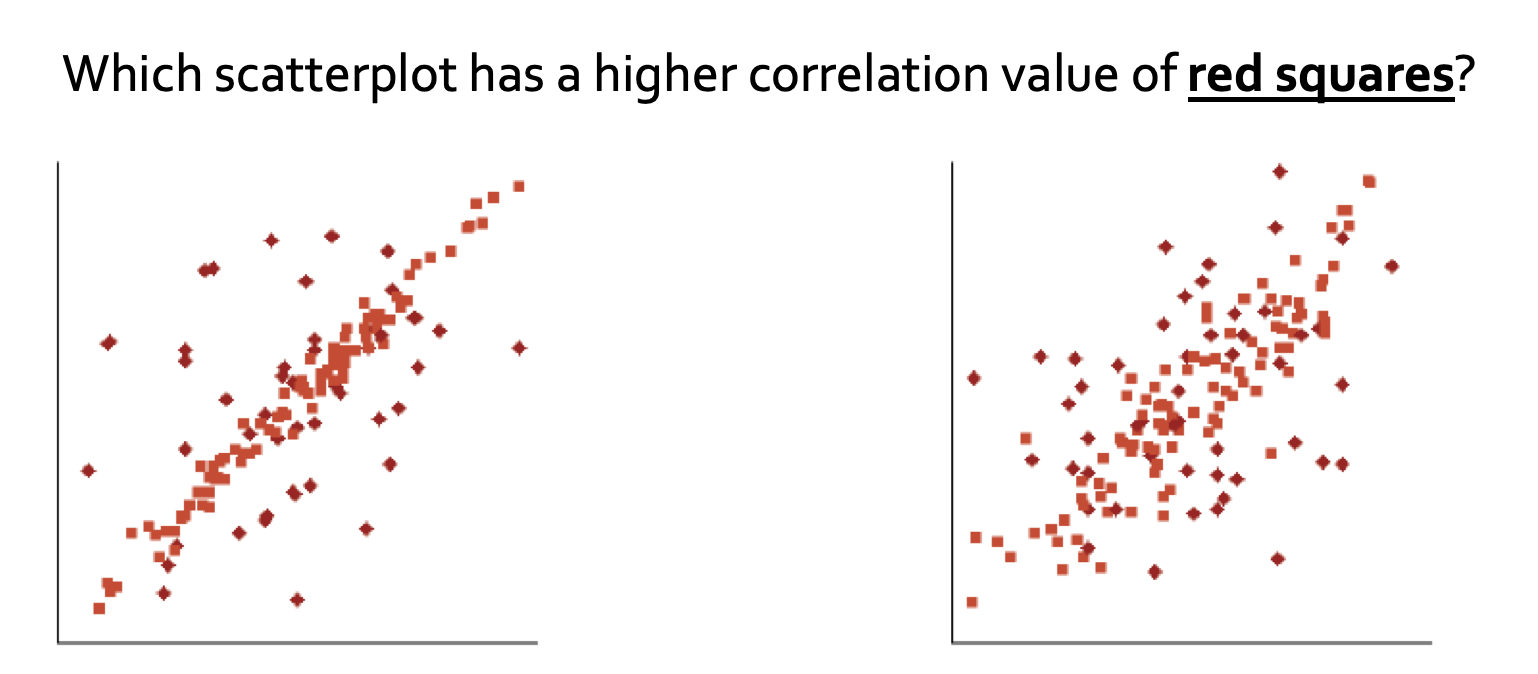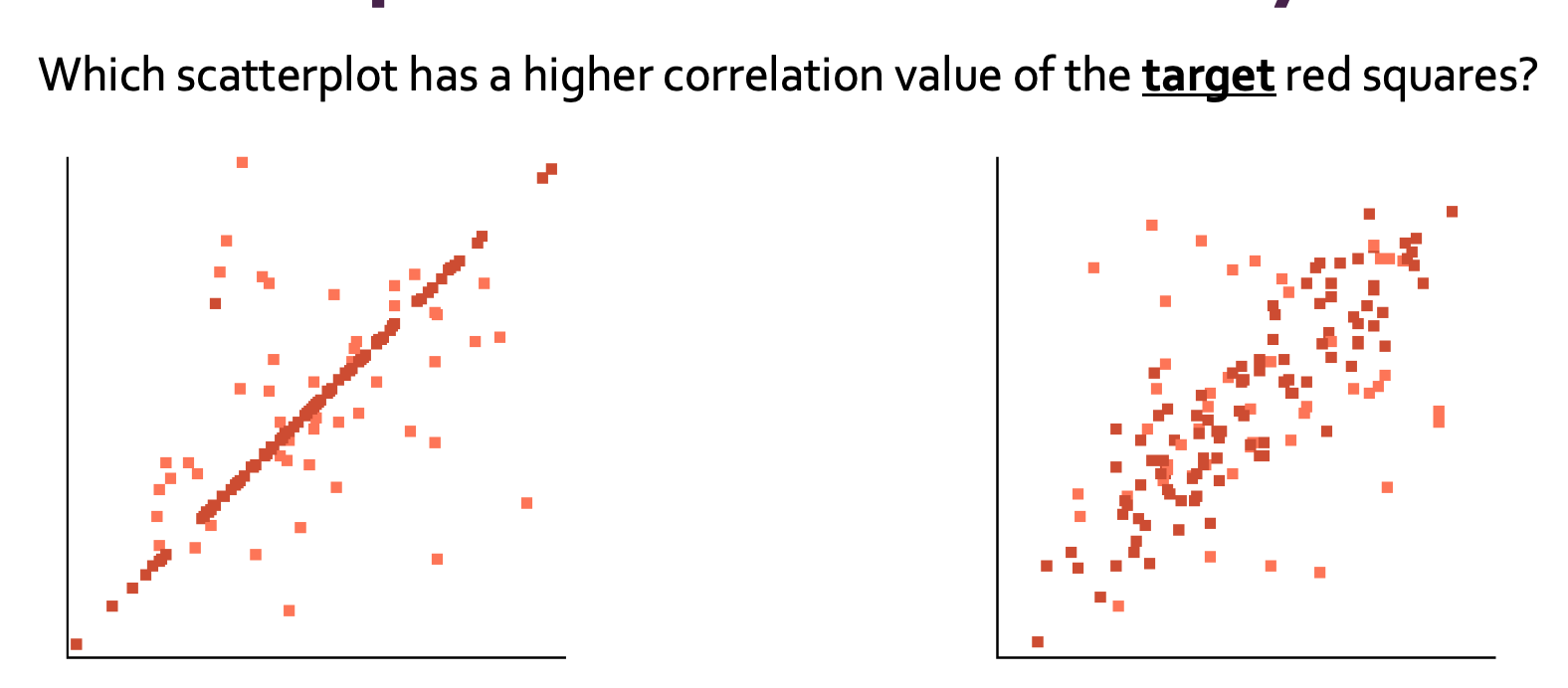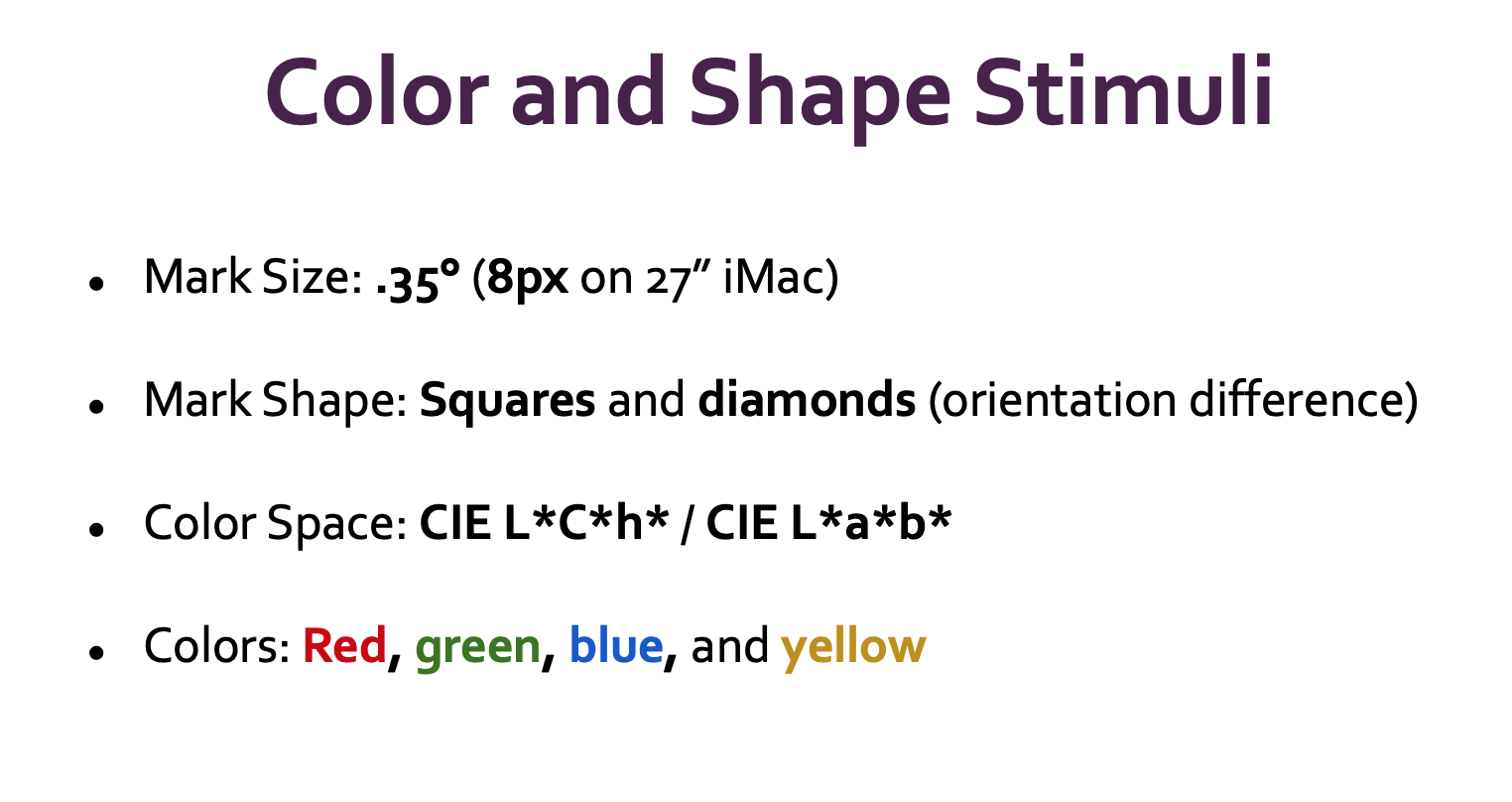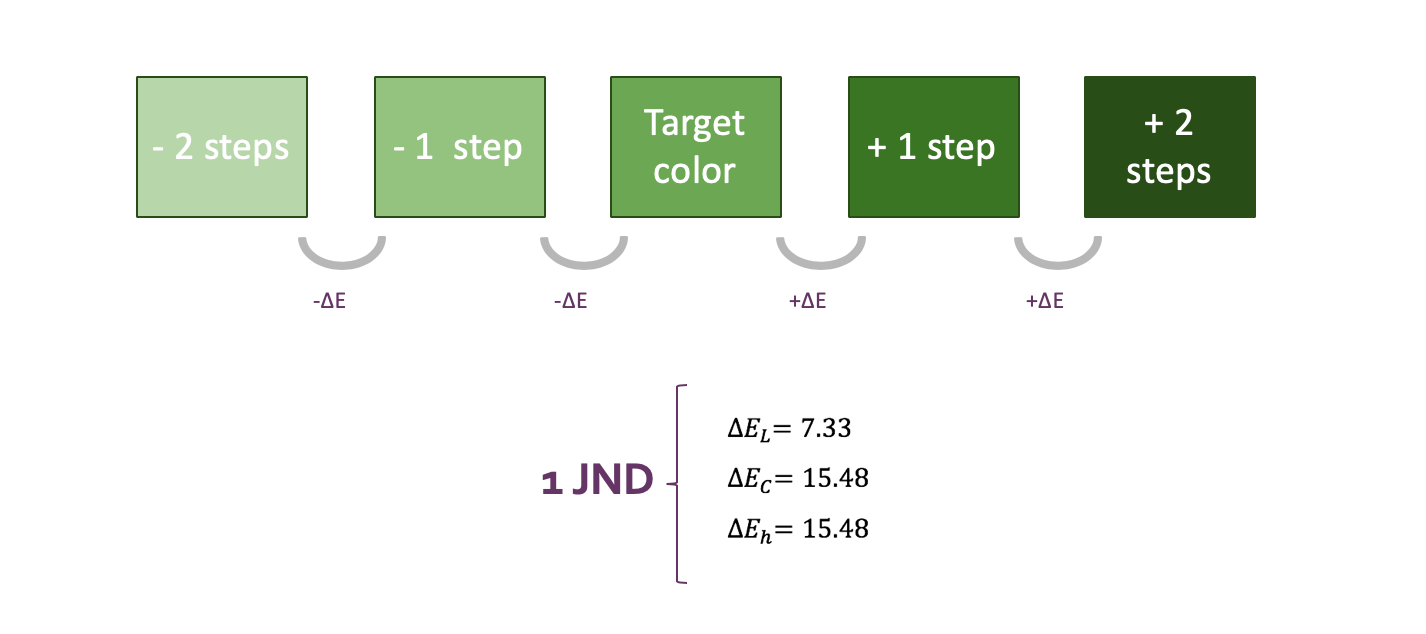This is a replication of the JND Discrimination task from Elliott & Rensink (VSS 2018), with the extension of a Steven’s Estimation Task.
Both tasks follow the basic methods from Rensink & Baldridge (2010). The discrimination task is set up as a design condition (i.e., only testing correlation values of .3, .6, .9). The only difference is the addition of 1. colored square and diamond shaped data points, and 2. a distractor (irrelevant) population of data on each scatterplot. Just like the single population case, participants will either view two scatterplots side by side and judge which is showing a higher correlation (of target colored/shaped points), or see three scatterplots and adjust the target plot to equal the mean of the two reference plots.
Discrimination Task Specifications (highlighting differences in stimuli)
Two populations of data present in every plot: a target population, and a distractor population. Crucially, the distractor population will always be randomly generated and set to r = .3. The shape of the target and distractor populations can also vary between squares and 45 degree rotated squares, i.e., diamonds.
E.g.,

or

The points and colors follow the same specifications as the visual search and numerosity tasks:


The Estimation Task will follow the same rules. On all three scatterplots (target, highRef, and lowRef), there should be a second, irrelevant population of data set to r = .3.
The hex-values for the colors can be found in Experimental Color Space.
Example Excel Sheet Input can be found in: Code_Params.
Example Data Output can be found in: MCCV_ColorXColor_Master.
The original Instructions for Running are also uploaded here.
Old Java code for the JND task can be found in VCLCorrelation on branch yp-distractordiamond.
The same exact logic should be used to extend the Stevens Estimation task to show two populations of data (a target and an irrelevant set).
Example of subconditions:
+2
+1
-1
-2
No Distractor
All at .3, .6, .9